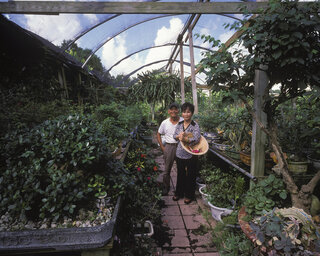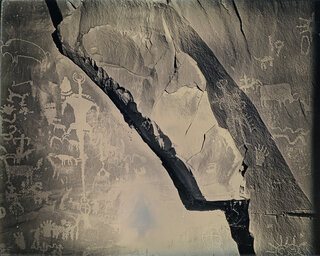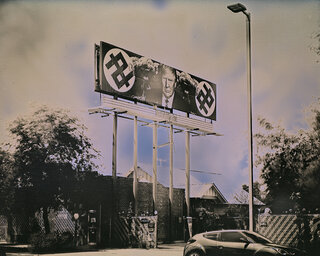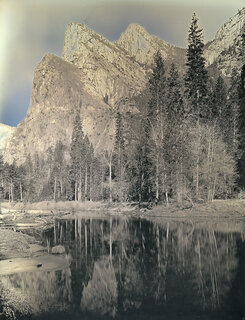
Excerpt from cataloguing text by Amanda Peters, Colorado State University student, 2012:
. . . The plate form is not an indigenous shape. It was created solely for the Western market after Maria and her husband Julian started selling their pottery to an increasing tourist population. The repeating feather design found on the plate was one of Julian Martinez's early inventions and it became one of his characteristic patterns. The dating of the plate can be narrowed down from the 1920s to 1943. This time period can be approximated by the signature located on the bottom of the plate. Maria did not start signing her plates until the 1920s and at Julian’s death she most likely stopped signing his name.
. . . The firing process creates the black finish sought after by Maria Martinez when the oxygen is smothered and the iron within the clay reacts to the changes within the fire pit. Once the pottery was finished it would come out as a black on black style that had both a glossy (from Maria rubbing the slip with a stone) and matte (from Julian’s slip designs) surface.




